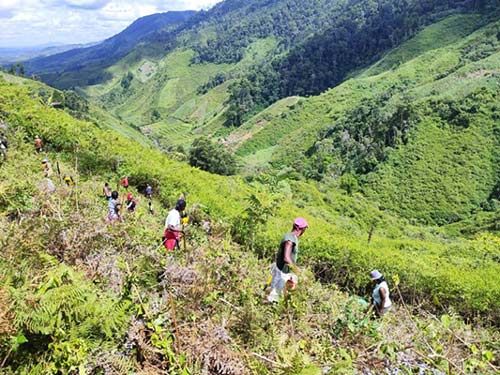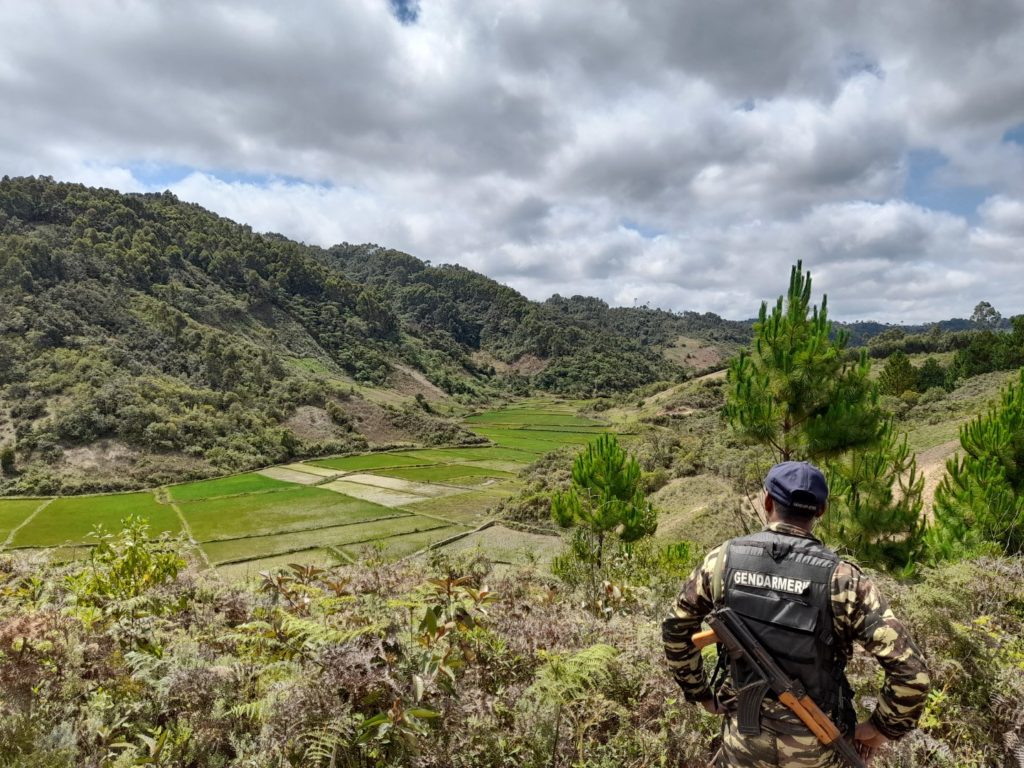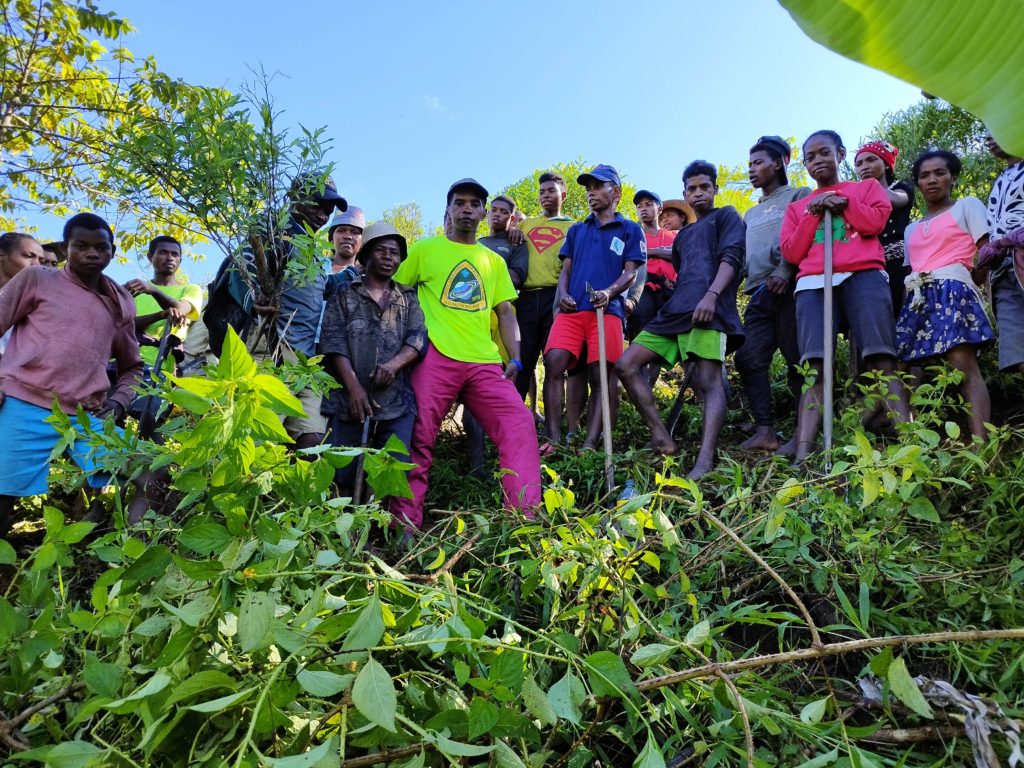The harmonious landscape of Anjozorobe Angavo represents one of the last remnants of primary forests in the Central Highlands of Madagascar. This area is home to a wide variety of unique plant and animal species and numerous streams, where several rivers take their source. Due to its proximity to the Capital City, the forest is subject to increasing pressures such as logging, slash-and-burn agriculture, and charcoal burning to meet the needs of a growing population. Forest restoration is therefore essential to address the increasing loss of forest cover caused by these activities.

A short overview of restoration
Forest restoration is the re-establishment of forest cover in degraded or deforested areas. It can be done in two ways: by planting native trees (active restoration) or by protecting the area to encourage natural forest regeneration (passive restoration). This action restores ecological services that are vital to both the biodiversity and the local communities. By restoring cleared forests, these communities can benefit from improved water supply, better protection against erosion, and increased soil productivity. As such, forest restoration builds community resilience to the adverse effects of climate change.
Two restoration strategies in Anjozorobe Angavo


In the Anjozorobe Angavo Protected Area, Fanamby is carrying out actions on two fronts. The first consists of awareness-raising activities, surveillance patrols, and monitoring. These patrol and control missions are regularly carried out by community patrollers also known as KASTI (Komitin'ny Ala Sy ny Tontolo Iainana) for the Analamanga region and KMT (Komity Miaro ny Tontolo Iainana) for the Alaotra Mangoro region. Their role is to monitor the forest and report any infractions committed within the Protected Area (PA).
Following their infraction reports, a joint raid, composed of representatives of Fanamby, KASTI/KMT, law enforcement officers, and judicial police officers, is carried out to seize illicit products and apprehend criminals. This first measure allows the protection of the core of the Protected Area against any human disturbance to achieve natural regeneration.
The second measure consists of a reforestation campaign by reforesting degraded areas with young plants of indigenous species. Since February 2023, more than 25,000 seedlings have been planted on five reforestation sites. They are located in Ambatomainty an'ala, Ambatomasina, Antsiripotaka, Beorana, and Marovato. Each site covers a surface of 5 hectares, for a total of 25 hectares of restored forest. With an average selection of 16 native species planted per site, species diversity was favored. The record was set in Antsiripotaka with 45 native species planted.
However, pioneer species were the most represented, such as Andrarezina (Trema orientalis), Harongana (Harungana madagasacriensis), and Valanirandrano (Nuxia sp.). These species are the first to emerge after a clearing in a tropical forest. They are fast-growing and develop best in the sun; they spread easily and will serve as shade for species that prefer growing in the shade. By reforesting these species, the objective will be to encourage the start of the forest succession process in the cleared area.
The Key Role of Communities


Community participation was essential to the success of this reforestation effort. It underscores the importance of their involvement in environmental conservation. In total, more than 460 people participated in this campaign, 49% of whom were women, and were actively involved in the activities of searching, collecting, transporting, and planting the seedlings. These seedlings were obtained from several sources, including nurseries, a collection of wildings in the forest, and cuttings.
The forest reforestation efforts will continue until the end of the rainy season, with the ambitious goal of planting 400,000 seedlings and restoring 400 hectares of degraded land. A large project funded by Rewild, which is actively engaged in wildlife protection and restoration. However, once the rainy season ends, the dry season will arrive and with it, the fire season. From September onwards, the focus will be on preventing and fighting forest fires, which pose a major threat to forest ecosystems and the lives of local people.